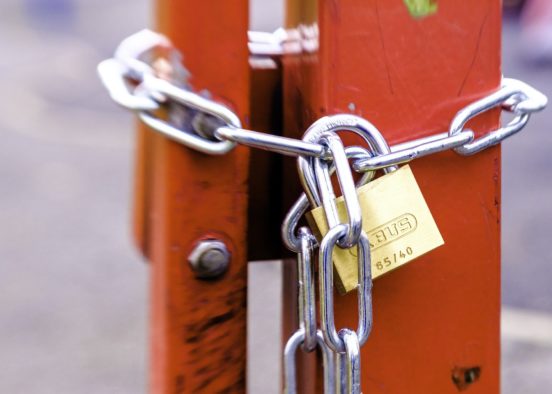So much has been happening in the last months. Since the WHO declared the coronavirus a global pandemic on 11th March, the situation has been rapidly evolving on a daily basis, in different parts of the world.
Speaking about the social life of COVID-19, we began to hear about the virus in January, on how it was spreading rapidly in Wuhan, China. Within a few weeks, the virus traveled to different parts of the world and has since been moving around on airplanes and on cruise ships. It is now reported in all countries and territories. COVID-19 has no nationality. It did not require a boarding pass or a passport, and was able to slip through border controls without difficulty. It has been very active in the mainstream and social media and is now part of our daily lives.
This pandemic is real
The situation we are in is serious. COVID-19 is taking many lives and making more and more people sick every day. And the numbers of people infected will continue to multiply. Governments of many countries are being demanded to take action quickly to stop the spread of the virus. The measures taken by communist China – the lockdown which began in Wuhan, a city of 11 million people, and soon extended to other parts of Hubei province, impacting more than 60 million lives – was observed with skepticism from the outside. These measures are now adopted by the most liberal and republican countries of the global north.
Since the beginning of this event, the narratives around COVID-19 has been evolving and the social media is playing a key role in shaping and reshaping these narratives. The power and influence of the social media is undeniable. This is evident from the WHO DG made the announcement of COVID-19 as the global pandemic at a press briefing streamed live on several social media platforms. This changed the public perception on WHO which is often criticized for being slow and conservative, to becoming one of the most influential information sources for COVID-19.
Narratives of COVID-19
We will all experience the lockdown and the quarantine differently in different parts of the world. Our experiences will be shaped on the basis of our social status at the macro and the micro level. At the macro level, it would depend on our experiences and the relationship we have with state authorities, our access to basic needs (such as food, water, shelter, toilets), and our access to health care. At the micro level, it depends on our relationship with our family, friends or the people we live with during this lockdown period and the personal space we have. Relationships will foster in some households, while they could break down in others. The fear of the unknown and the uncertainty of the situation will influence our day-to-day lives.
There are so many evolving narratives around COVID-19. How did we move so fast from hand washing to social/physical distancing to quarantine and now lockdown in many parts of the world as a protective measure against the virus? The narrative shifted quickly from China being the epicenter of the outbreak to Europe and the United States being the epicenter of the pandemic. There has also been a quick shift from a public health response to the political and economic response.
Since the beginning of the outbreak of COVID-19, WHO has been advocating handwashing as the most effective protection against the virus, at the individual level. While recommendations for state authorities to implement measures such as social/physical distancing, which involves closure of schools and universities, and cancellation of events with public gatherings like concerts and sports was delayed. WHO also advised against countries imposing travel or trade restrictions. However, soon after the pandemic was declared, countries in Europe began shutting down their individual national borders. Travel restrictions were imposed against Europeans by the United States, and multiple flights were cancelled across the world. How did this happen so quickly?
When the epicenter of the pandemic moved from China to Europe, multiple countries took immediate actions to safeguard their own territories and populations. Unfortunately, Italy and Spain being are hit hardest, with high numbers of infections and deaths among the elderly people and health care workers. The UK and the US governments which have been criticized for their slow actions, are being warned that they could face a similar fate as Italy and Spain.
What can we learn from the past?
Looking back at the responses to Ebola outbreaks in West Africa in 2014 and more recently in the Democratic Republic of the Congo, what they have taught us is that the most important tool to control an infectious disease outbreak is to gain community trust build trust and to communicate frequently with the people. “Care builds trust” says Vinh-Kim Nguyen of The Graduate Institute of Geneva. If governments want to build trust, they have to look after the people who are sick and protect them. They need to do something that is tangible and visible, to show that they care and that something is being done.
In this case, most governments are choosing to highlight quarantine, which is an ancient infectious disease control measure, dating back to the 12th Century. It was first introduced in what is today Croatia, on a ship, in relation to a plague outbreak. It has since been used in limited geographical areas as an international health measure to control the spread of infectious diseases like cholera, smallpox, yellow fever, tuberculosis, leprosy, influenza, AIDS, SARS and more recently for Ebola.
When quarantine was imposed on the British licensed cruise ship ‘Diamond Princess’ which docked in Japan in February, experts blamed the Japanese authorities mismanaging the outbreak through the quarantine. The numbers of COVID-19 infection increased from 10 to more than 700 persons, out of a total of 3700 passengers on board, by the end of the 14 days quarantine. Conversely, the lockdown in Hubei province was praised by the international team of experts led by WHO to assess China’s response to COVID-19 in late February. They said the lockdown was effective in slowing down the spread of the virus. Government policies in Europe and the US on quarantines and lockdown are being influenced by projections of numbers of infections and deaths. Neil Ferguson of Imperial College, whose mathematical modeling is informing the UK government’s policy decisions says these measures need to be in place until a vaccine is available. This means for at least 12-18 months.
The question is whether quarantine or lockdown is the best option and whether it should be the main focus of the pandemic response? Is it diverting the attention and resources away from where the needs are most, that is in the health care sector? Are health care workers being equipped to carry out their work confidently? Do they have adequate PPE? Are the people suspected of COVID-19 who are at risk of developing severe outcomes of illness being tested and cared for?
Why don’t governments also consider projections of the consequences a lockdown would have on other health problems and on social issues?
WHO’s Mike Ryan said on 22 March that countries can’t simply lock down their societies to defeat coronavirus. What is really needed is to focus on finding the people who are infected, their contacts and to isolate them so that the virus does not further transmit to others.
Devi Sridhar of the University of Edinburgh‘s Usher Institute says lockdown is not the solution. It just buys time to do mass testing, contact tracing and isolation of virus carriers. It is something that allows health services to be prepared to deal with rising number of patients.
Carlos Caduff of King’s College questions whether quarantine or lockdown is an effective tool. He asks if countries with less restrictions on movement are witnessing faster and wider transmission of the virus.
Based on the history of quarantine, in many instances, groups that are already socially marginalized and stigmatized tend to be inappropriately quarantined. A web-based roundtable discussion on COVID-19 carried out by Somatosphere on 28 February says evidence from the early days of the AIDS epidemic in Haiti and in the United States show that gay men suffered from worsened health conditions and access to health needs during the quarantine period.
Wendy Parmet of Northeast University says quarantine can be a useful tool when done well – when it separates the persons who are not sick from the sick, when it does not enforce laws or authority of the state in policing people.
Mark Rothstein a health policy legal expert says 4 key issues need to carefully be considered before imposing quarantine (1) necessity, effectiveness, scientific rationale (2) proportionality and least infringement (3) humane supportive services (4) public justification.
A study conducted Hawryluck et al from University of Toronto, on 15,000 persons who were quarantined during SARS in Canada in 2003 showed that 29% of those who were quarantined for an average of 10 days had symptoms of PTSD, and 31% had depression.
A rapid literature review of the psychological impact of quarantine carried out by Samantha Brooks and team from King’s College shows that most studies reported negative psychological effects which include post-traumatic stress symptoms, confusion and anger. The main stressors were associated with longer quarantine duration, the fear of infection, frustration, boredom, inadequate supplies, inadequate information, financial loss and stigma. Some research suggest that the effects could be long lasting.
To mitigate the consequences of quarantine, Brooks et al suggests that the quarantine period be kept short, based on the duration of the incubation period of the disease, and that authorities stick to the timeframe announced. “For people already in quarantine, an extension, no matter how small, is likely to exacerbate any sense of frustration or demoralization. Imposing a cordon indefinitely on whole cities with no clear time limit might be more detrimental than strictly applied quarantine procedures limited to the period of incubation.”
This pandemic is socially exhibiting both positive and negative effects. It has definitely increased awareness on the infectious disease and the importance of handwashing. It has drawn attention to epidemiology of disease spread (e.g. many people are talking about flattening the curve). It has connected people across the world through social media and through lockdown. It has displayed expressions of care, compassion, solidarity and creativity.
While at the same time, it has demonstrated xenophobia, fear, anxiety, paranoia, blame, limits of capacities of both rich and poor countries in dealing with a major health crisis. I have mainly focused on the big picture issues related to the global North. I cannot imagine how the prolonged lockdown will play out in countries like India and South Africa.
This is just the beginning. We need to look into the health and social consequences of the lockdown, just as we are on the economic aspects.
Aphaluck Bhatiasevi is a PhD Candidate in Social Anthropology at the University of Edinburgh.










Comments by